Sierra Nevada Cycling: Best Routes, Maps & Tips
Everything you need to explore Sierra Nevada by bike - top cycling routes, best seasons to ride, where to stay, and other tips for an epic cycling tour.
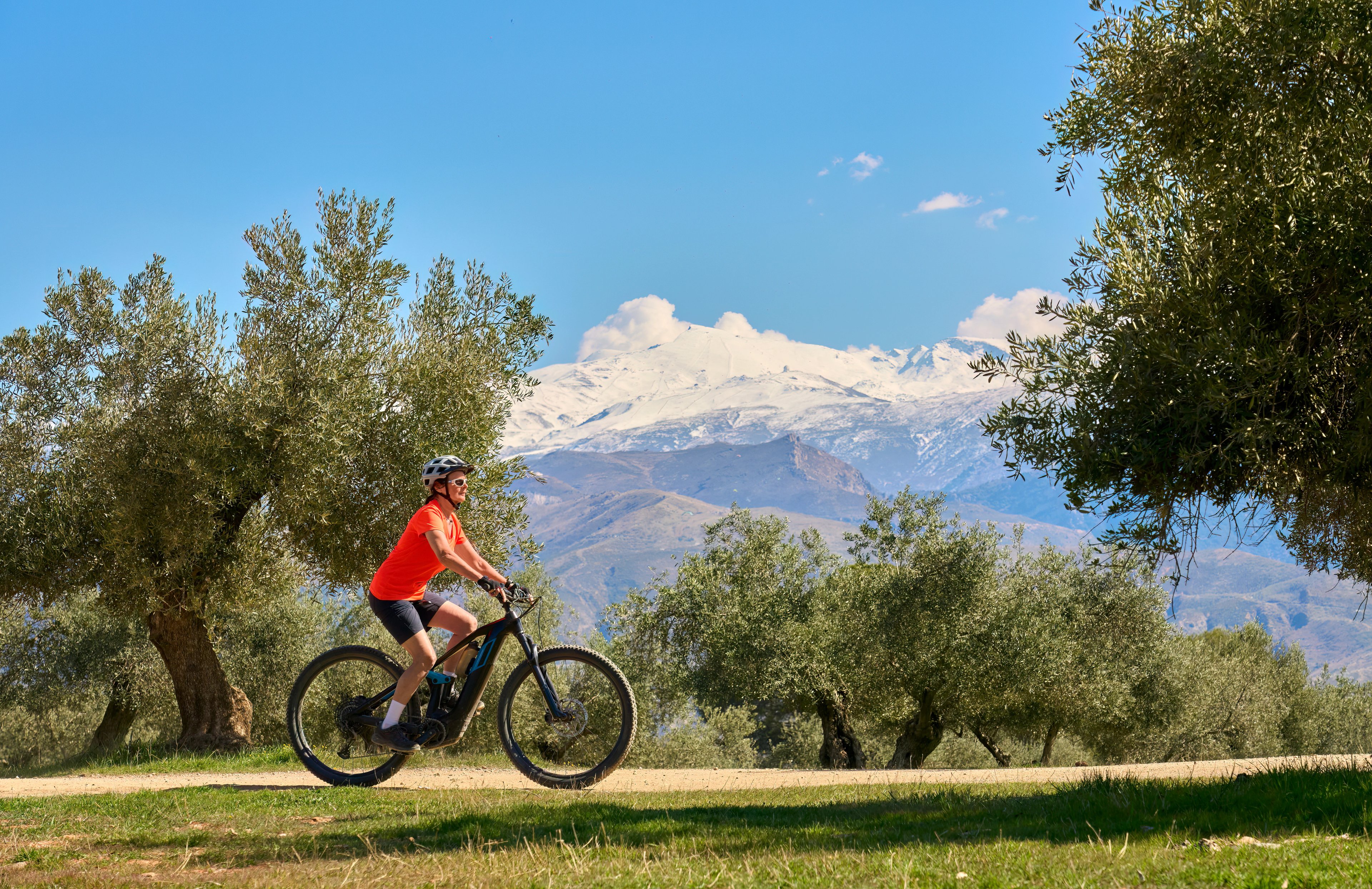
Quick Links
Welcome to Spain’s high-altitude cycling playground!
The Sierra Nevada is one of Europe’s most dramatic and rewarding mountain destinations for cyclists — a place where long, sustained climbs rise above 3,000 metres, quiet roads wind through remote valleys, and Andalusian sunshine makes riding possible for most of the year.
Unlike coastal or inland cycling regions, the Sierra Nevada offers something truly unique: Europe’s highest paved road, stretching all the way to the slopes of Pico del Veleta at 3,398 m.
Add to this the iconic Monachil climb (El Purche), the serene Alpujarra villages, and the labyrinth of mountain routes starting right from Granada, and you get a cycling region built for riders who crave big landscapes, big climbs, and big accomplishments.
Skip to Sierra Nevada cycling routes
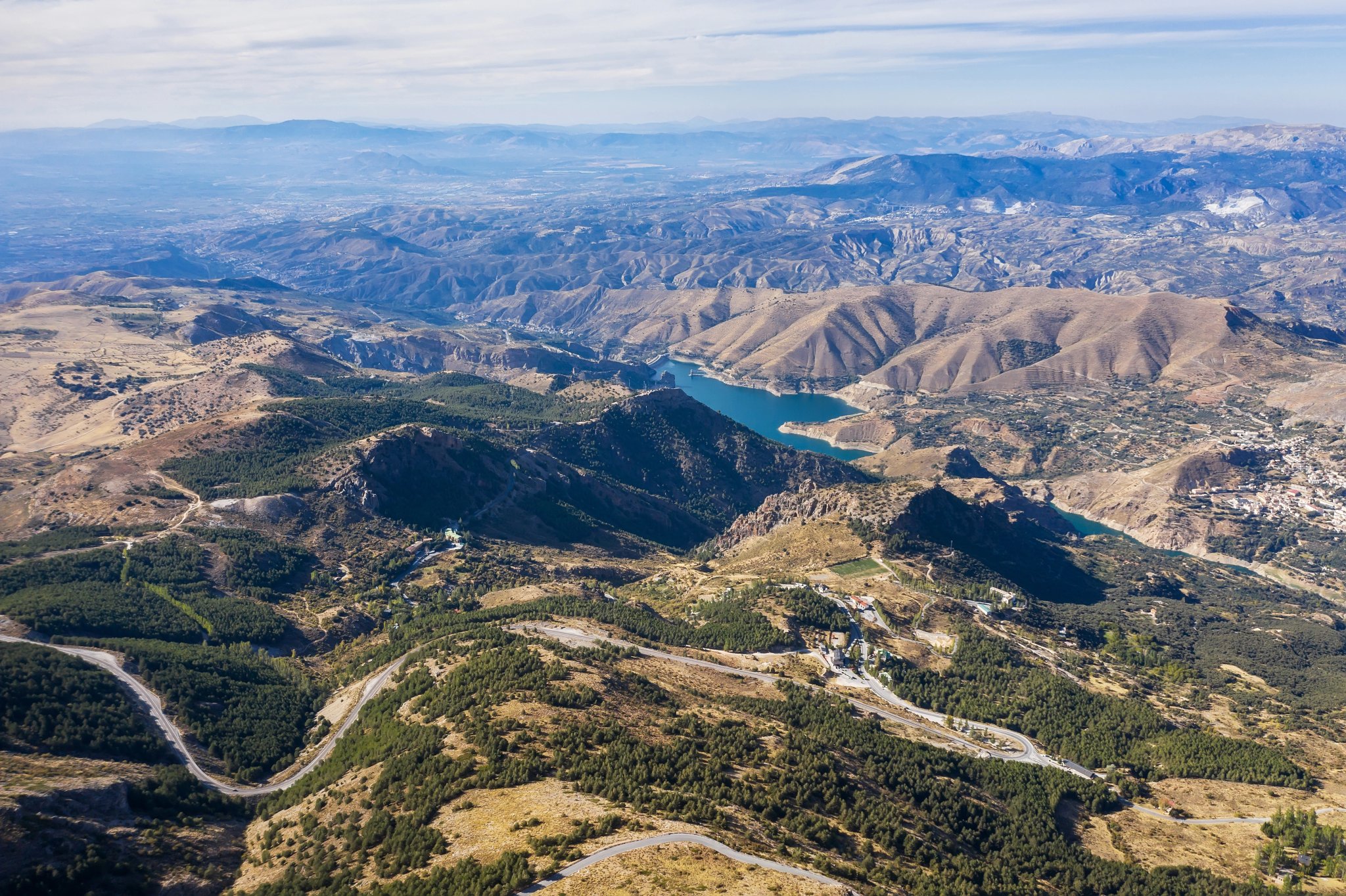
Overview of Sierra Nevada
The Sierra Nevada mountain range stretches across the province of Granada in southern Spain, forming one of the most varied cycling regions in the country.
In a compact, easily accessible area, you can expect:
high mountain passes,
Mediterranean foothills,
traditional Moorish villages,
and low-traffic alpine roads.
At the heart of the region lies the Sierra Nevada National Park, a UNESCO Biosphere Reserve known for its rich biodiversity and dramatic elevation changes.
From the city of Granada, riders can climb more than 2,000 vertical metres without ever leaving paved roads — a rarity in European cycling and a major reason the area has become a hotspot for both amateur riders and professional teams seeking altitude training.
Location
Sierra Nevada is located in Andalusia, in the province of Granada in southern Spain. It sits just east of Granada city and stretches toward the Mediterranean, forming one of the most dramatic mountain backdrops in the country.
.png&w=2048&q=85)
The region is unusually compact for such a high-altitude environment.
From Granada’s historic centre, you can reach sustained climbing within minutes — a rare convenience for a mountain range with peaks rising above 3,000 metres.
For cyclists, this means:
Immediate access to big-mountain routes without long transfers
The ability to combine urban stays in Granada with alpine riding
Easy transitions between foothills, reservoirs, valleys, and high-altitude climbs
Multiple starting points for the most famous Sierra Nevada cycling routes
Terrain
Sierra Nevada offers some of the most rewarding cycling terrain in Spain, shaped by steep elevation changes, exposed mountain roads, and dramatic landscapes that shift with altitude.
Here’s what to expect:
High Mountain Terrain (2,000–3,398 m)
This is where Sierra Nevada becomes truly iconic.
Long, sustained climbs rise above 2,000 m, eventually reaching Europe’s highest paved road near Pico del Veleta. The gradients are generally steady rather than punchy, built for endurance and altitude work.
Expect:
Very long ascents (30–40 km)
Thinner air and stronger winds at higher elevations
Alpine-style landscapes with minimal vegetation
Wide-open views over the Mediterranean and, on clear days, Africa
These routes define cycling Sierra Nevada Spain for many riders.
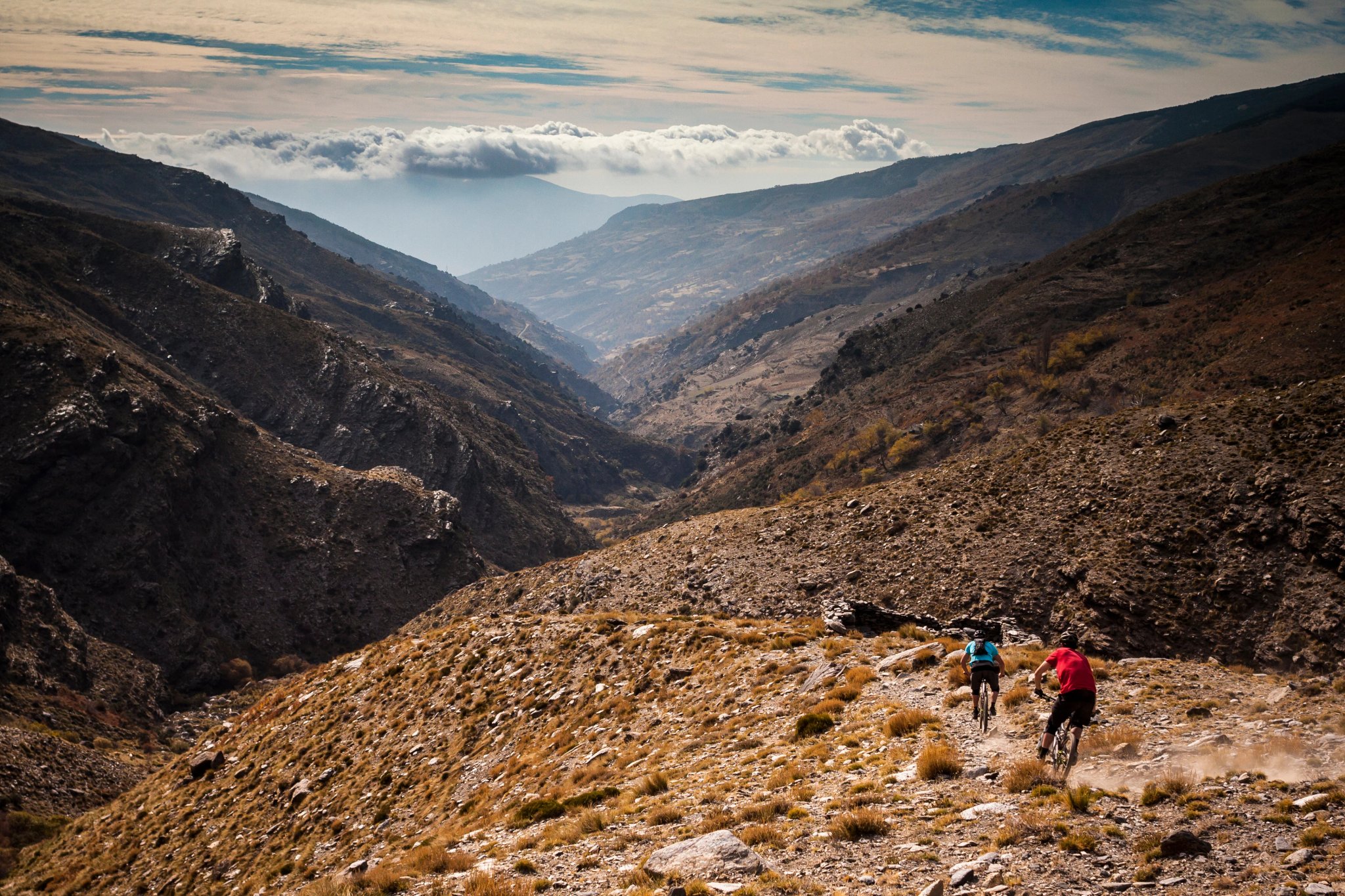
Foothill Terrain (800–1,800 m)
This mid-mountain zone is perfect for more moderate days and features several classic Sierra Nevada cycling routes.
Roads here tend to be:
Smoothly paved, winding, and low traffic
Surrounded by forests, terraced farms, and reservoirs
Cooler than the lowlands but less exposed than higher elevations
Güéjar Sierra, the Canales Reservoir, and the approach roads to the ski station all lie in this zone.
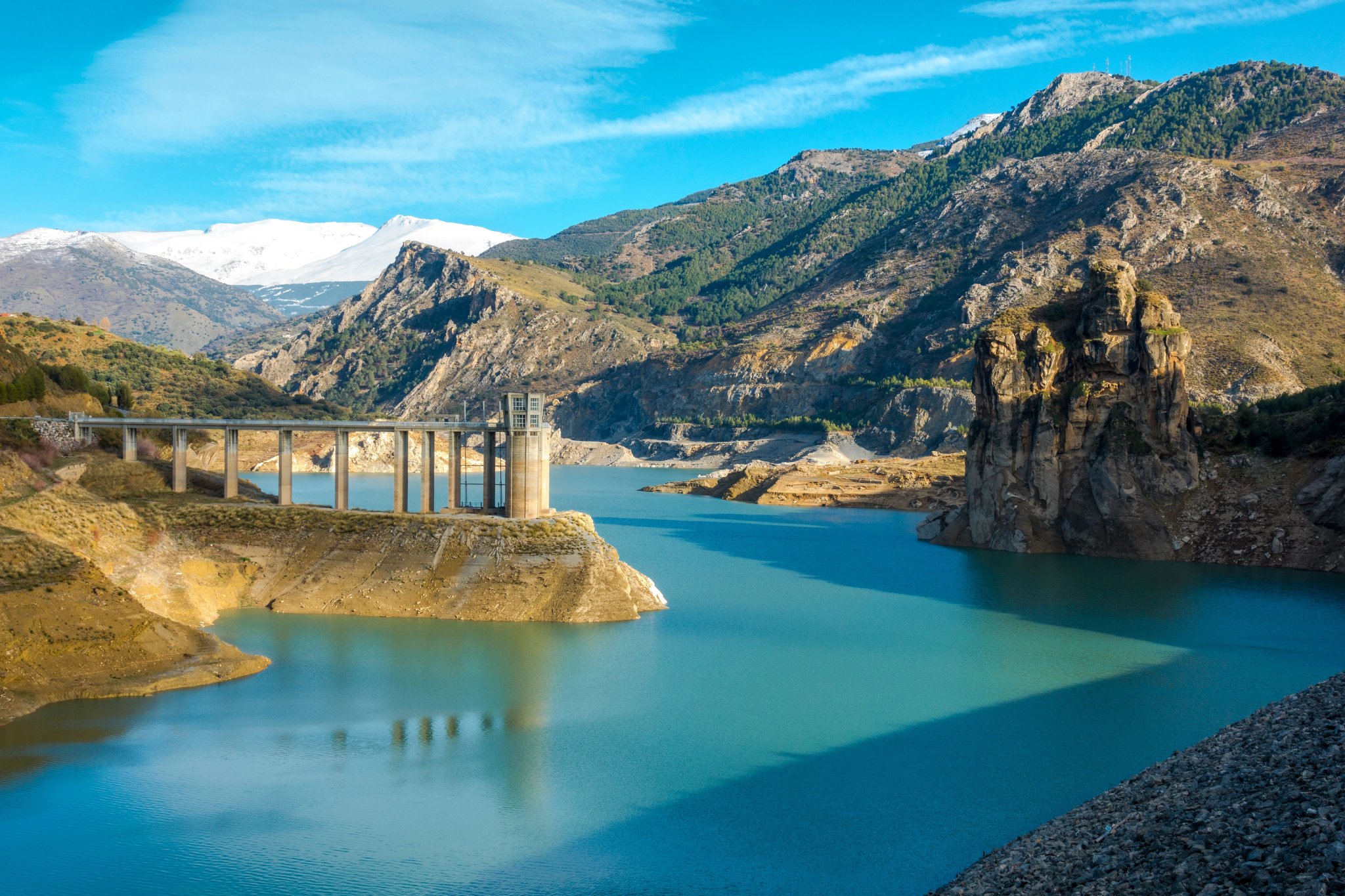
Alpujarra Slopes (Southern Side)
A distinct terrain zone shaped by deep valleys, white villages, and historic Moorish routes.
Expect:
Narrow, winding climbs
Rolling terrain mixed with sharp gradients
Cultural landscapes with terraced hillsides
This area is ideal for scenic, multi-village rides rather than pure elevation challenges.

3. Valleys & Rural Plains
At lower elevations closer to Granada and the western foothills, the terrain eases into:
Rolling valley roads
Long, gentle approaches to major climbs
Warm, dry microclimates that make shoulder-season riding ideal
This area is perfect for acclimatisation rides or for linking several climbs into a longer loop.

Gravel & Mixed Terrain
While best known for road cycling, Sierra Nevada also offers excellent gravel options:
Old mining tracks
High-altitude fire roads
Remote valleys with compacted dirt surfaces

Why Cyclists Love It
Sierra Nevada has become one of Spain’s most iconic mountain destinations for riders who love long climbs, altitude challenges, and expansive mountain landscapes. It offers a very different cycling experience from coastal or rolling destinations — this is pure, high-mountain riding with a Mediterranean twist.
Here’s what makes cycling Sierra Nevada so special:
1. Europe’s Highest Paved Road
At 3,398 metres, the road up to Pico del Veleta is the highest paved ascent on the continent.
It’s not just a climb — it’s a milestone every ambitious cyclist wants to tick off.
40+ km of continuous ascent
Steady gradients perfect for endurance
Fully exposed alpine environment with panoramic views
For many, Veleta alone makes the trip worthwhile.

2. Long, Sustained Climbs Perfect for Training
Sierra Nevada is famous for its big vertical gain. From Granada, you can climb more than 2,000 m without a single descent — something rare even in the Alps and Pyrenees.
This makes the region ideal for:
Altitude training
Base-building and endurance blocks
Power-focused climbing sessions
Preparing for events like Haute Route, Gran Fondos, and mountain sportives
Professional teams regularly base themselves here for training camps.
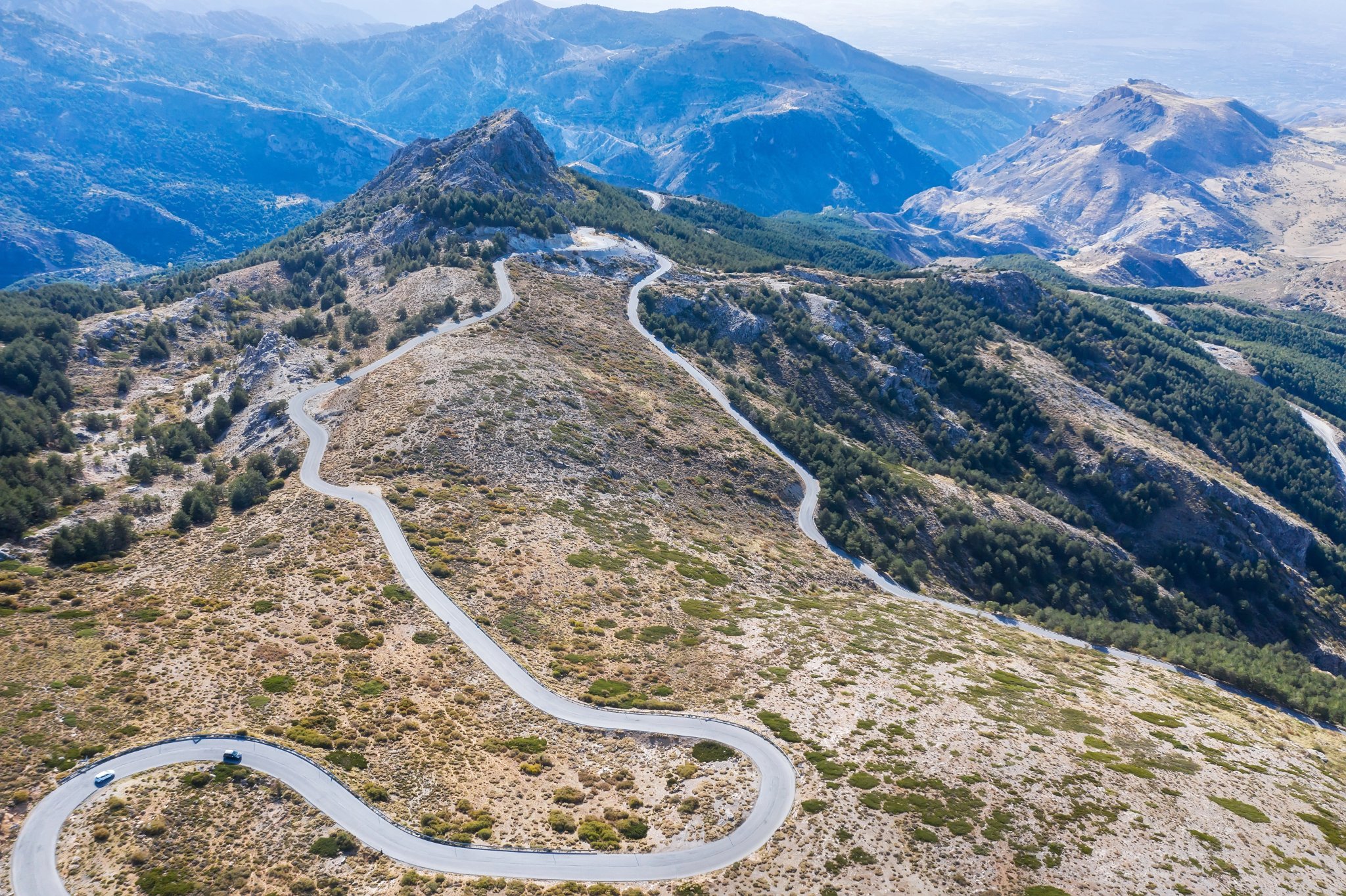
3. Variety of Terrain Within a Small Area
The region packs a surprising mix of landscapes into a compact footprint:
Alpine high mountain roads
Rolling foothills
Quiet reservoir loops
Moorish villages in the Alpujarras
High-altitude gravel tracks
This variety allows you to build multi-day Sierra Nevada cycling routes that progress naturally from moderate to high-intensity days.

4. Quiet Roads and Low Traffic
Outside of peak times near the ski station in winter, Sierra Nevada is known for its:
Clean, wide, well-maintained mountain roads
Minimal traffic at higher elevations
Peaceful foothill descents and rural valleys
It’s a dream destination for cyclists who prefer quiet, uninterrupted climbing.
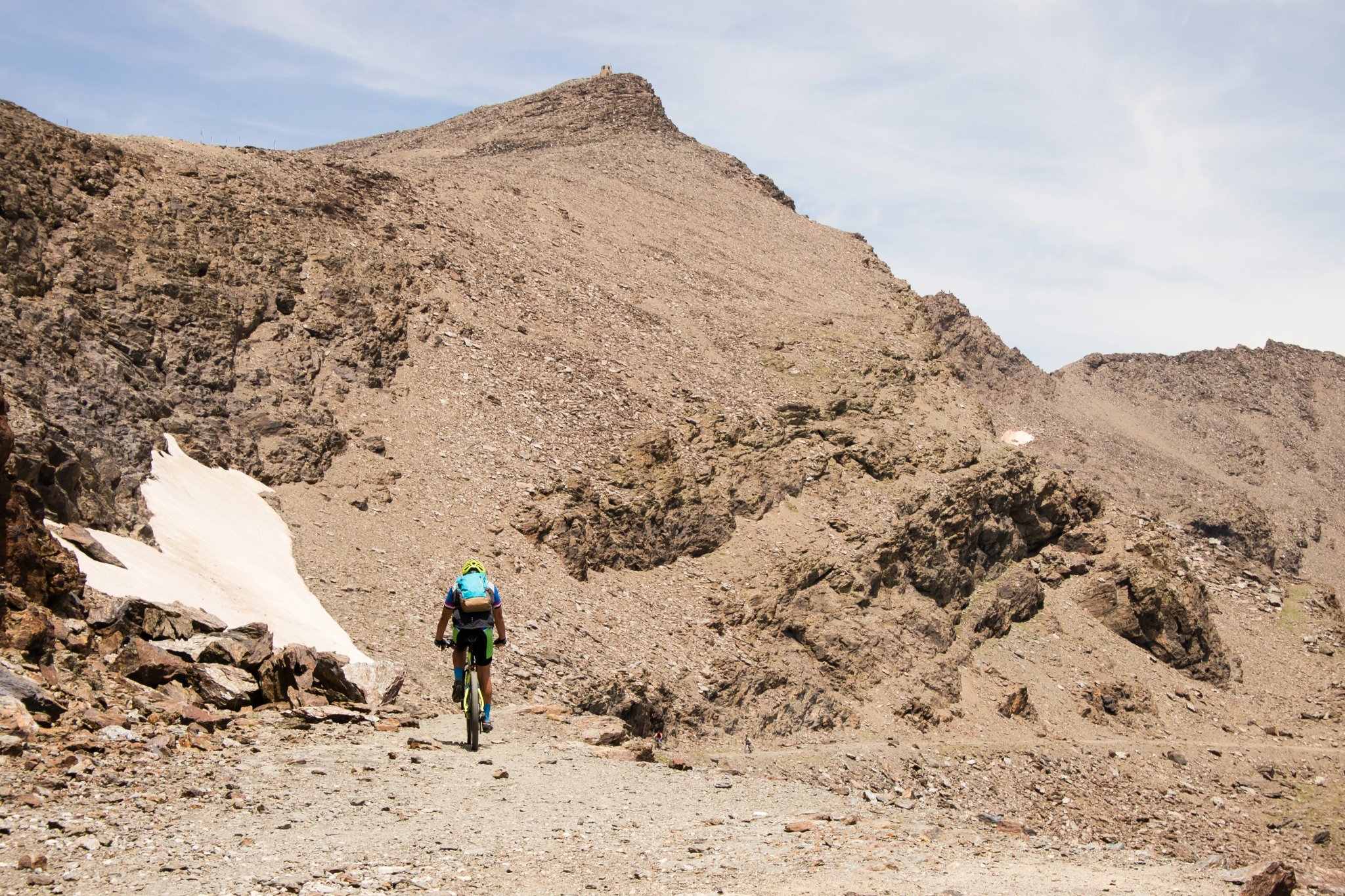
5. Sunshine, Dry Air & Long Riding Seasons
Sierra Nevada enjoys one of the best cycling climates in Europe:
Warm autumns
Mild springs
Dry Mediterranean air
Crisp, clear winter days in the foothills
Even when high routes are closed due to snow, the lower valleys remain rideable for most of the winter.

6. Easy Access From Granada
You can roll out of Granada’s historic centre and immediately start climbing — no long transfers, no complicated logistics.
This convenience allows for:
Efficient training days
Simple multi-day planning
Staying in a cultural city while enjoying high-mountain riding
It’s the best of both worlds.

7. Ideal for Both Road & Gravel
The combination of smooth mountain roads and rugged high-altitude fire roads makes Sierra Nevada perfect for:
Road cycling
Gravel adventures
Mixed-terrain riding
Bikepacking
You can easily build a route that mixes paved climbs with remote gravel plateaus.

8. Remarkable Scenery at Every Altitude
The shift in landscapes as you climb is dramatic:
Almond orchards near the base
Pine forests in the foothills
Bare alpine ridges above 2,400 m
Snow-capped peaks in early spring
Mediterranean views from certain summits
It’s visually stunning and incredibly diverse.

When to Go
Sierra Nevada’s high-altitude terrain means conditions vary dramatically between seasons.
Quick overview:
March–May: Prime season – rising temps, long climbs opening up
June–August: Hot in Granada, excellent at altitude – best for Veleta attempts
September–October: Ideal overall – stable weather, quiet roads, big mountain days
November–February: Not suitable – winter conditions, snow and ice in the mountains
Below is what each season offers in more detail.
Spring (March–May)
Spring is one of the best times to cycle Sierra Nevada. Temperatures rise quickly in the foothills while the high mountain roads begin to clear of winter snow, especially from April onward.
Temperatures: 15–24 °C at mid-elevation (cooler higher up)
Best for: Long climbs, endurance rides, mixed terrain
What to expect:
Ideal temperatures for longer days
Blossoming landscapes in the lower valleys
High routes may still have snow early in the season
Crisp, clear visibility — fantastic for photography
April–May typically offer the most stable conditions for classic Sierra Nevada cycling routes.
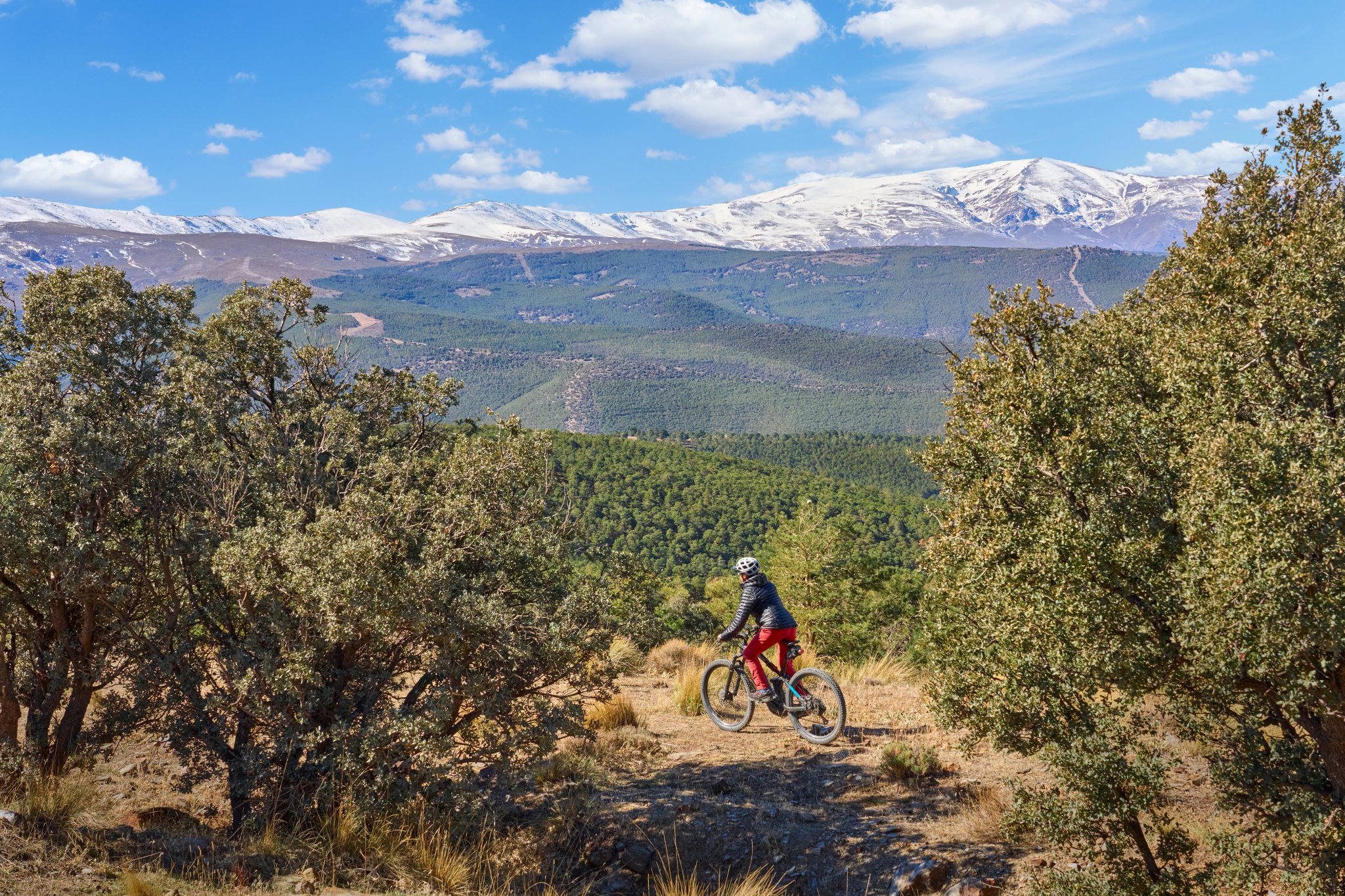
Summer (June–August)
Summer is warm at lower elevations but surprisingly pleasant at altitude — a huge advantage for cyclists. While Granada and the lower valleys can reach 35 °C, temperatures quickly drop as you climb.
Temperatures:
25–35 °C in Granada
15–22 °C above 2,000 m
Best for: High-altitude riding, early starts, Veleta attempts
Good to know:
Start early to avoid heat in the lower sections
The high mountains are at their most accessible
Afternoon wind is common at altitude
Hydration and sun protection are essential
This is the peak season for attempting the road toward Veleta.

Autumn (September–October)
Autumn is arguably the best overall season for cycling Sierra Nevada Spain. Temperatures are mild, conditions are stable, and the crowds disappear after summer.
Temperatures: 18–27 °C in September, cooler from late October
Best for: Big climbs, long-distance loops, multi-day trips
Why ride in autumn:
Comfortable temperatures without summer heat
Quiet roads through the Alpujarras
Golden colours in the foothills
Crisp air and exceptional visibility
September–October is a favourite among both amateur cyclists and pro training camps.
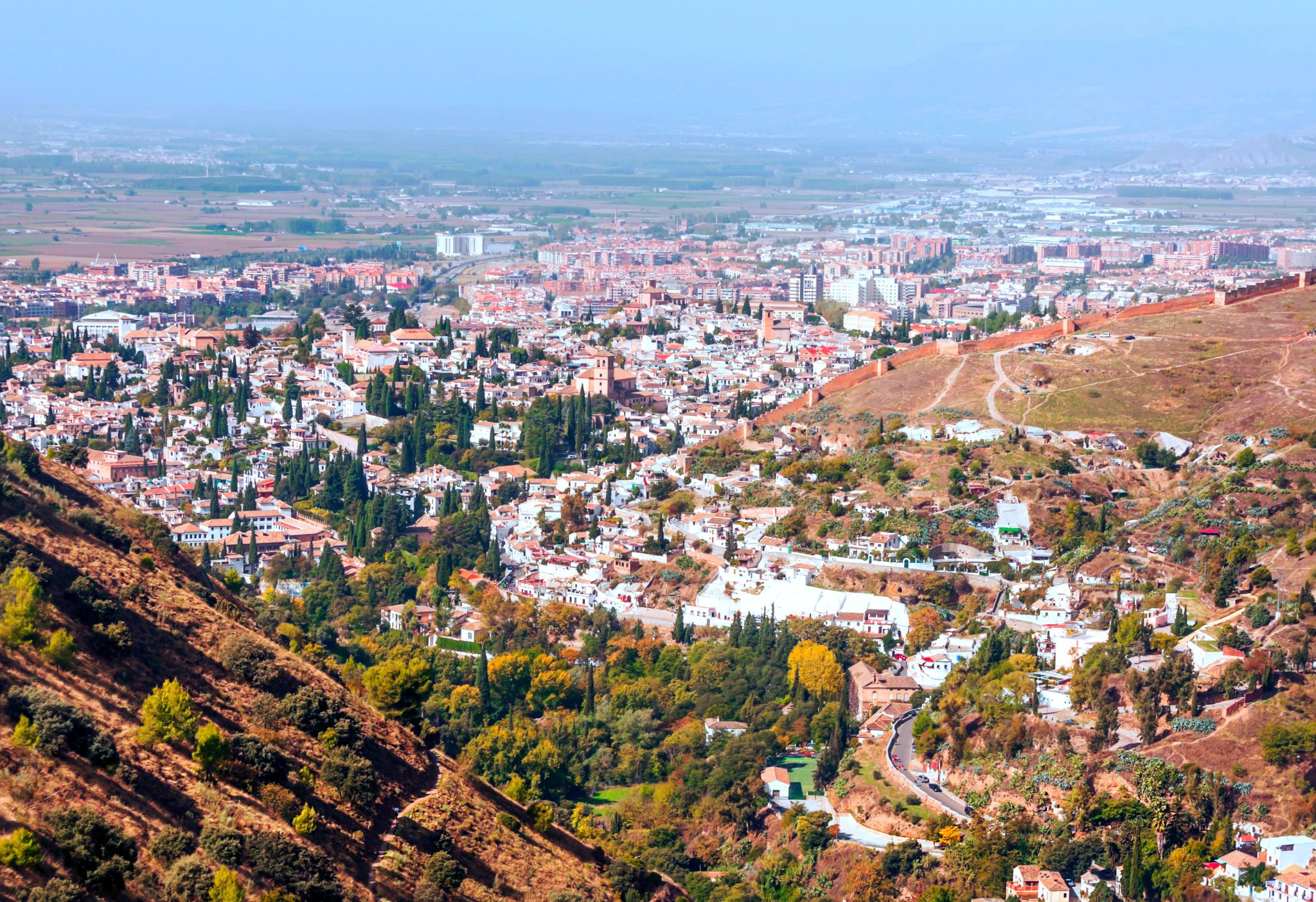
Winter (December–February)
Winter brings varied conditions. While the high mountain roads are typically closed due to snow — including much of the Veleta ascent — the foothills and lower valleys remain rideable.
Temperatures:
7–14 °C at mid-elevation
Cold and sub-zero temperatures high up
Best for: Low-elevation riding, cultural routes, reservoir loops
Good to know:
Snow and ice make upper mountain routes unsafe
Short daylight hours limit long rides
Foothills and Alpujarra villages remain enjoyable
Dry winter days offer beautiful light and clear skies
Winter is not suitable for high-mountain Sierra Nevada cycling routes, but you can still enjoy superb riding below 1,500 m.

Best Sierra Nevada Cycling Routes
Sierra Nevada is home to some of Spain’s most iconic climbs — long, sustained ascents that rise well above 2,000 metres, winding mountain roads with minimal traffic, and cultural routes through historic Moorish villages.
Below you’ll find a curated selection of the very best Sierra Nevada cycling routes:
1. Pico del Veleta – Europe’s Highest Paved Road
Distance: ~40 km (one way)
Elevation gain: Up to 2,700–2,900 m (depending on start point)
Start/Finish: Granada → High road toward Veleta

This is the legendary climb in Sierra Nevada — the highest paved road in Europe and one of the world’s great cycling achievements. Beginning in Granada, the climb is long, steady, and increasingly exposed the higher you go.
Above 2,500 m, the landscape becomes barren and lunar-like, with sweeping views over the Mediterranean and, on clear days, even the mountains of Morocco.
Highlights:
Iconic bucket-list ascent
Europe’s highest paved cycling route
Steady gradients ideal for power-based climbing
Spectacular panoramic views at altitude
A must-do for any cycling Sierra Nevada Spain trip
Good to know: The very top section may close due to snow or wind; late spring to early autumn offers the best access.
This route is featured on Day 5 of our Sierra Nevada Cycling Tour.

2. Monachil / El Purche (Vuelta Classic)
Distance: ~25–40 km depending on the loop
Elevation gain: ~900–1,600 m
Start/Finish: Granada or Monachil

One of the most famous Vuelta a España climbs. El Purche is steep, punchy, and relentless — a completely different character from the long, steady gradients elsewhere in Sierra Nevada. Expect ramps over 15%, narrow switchbacks, and a tough but rewarding ascent.
Highlights:
Steep gradients with challenging ramps
Iconic Vuelta climb
Beautiful views back toward Granada
Ideal for advanced riders who love short, intense efforts
Good to know: This climb fits perfectly into a half-day ride or can be combined with the ski station climb for a massive challenge.

3. Güéjar Sierra & Canales Reservoir Loop
Distance: ~50–70 km
Elevation gain: ~1,200 m
Start/Finish: Granada or Güéjar Sierra

A stunning route that winds along the emerald waters of the Canales Reservoir before climbing toward the mountain village of Güéjar Sierra. Perfect for moderate days, recovery rides, or linking into larger loops.
Highlights:
Beautiful reservoir views
Quiet backroads with light traffic
Final climb into the village is short but rewarding
Great warm-up for the bigger climbs ahead
This route is featured on Day 3 of our Sierra Nevada Cycling Tour.

Suggested Itinerary
This itinerary is designed for cyclists who want to experience Sierra Nevada’s most iconic climbs, high-altitude landscapes, Andalusian countryside, and the legendary ascent toward Europe’s highest paved cycling road.
Suggested Itinerary
Day 1: Arrival in Granada
Day 2: Granada Countryside Ride
Day 3: Güéjar Sierra & Canales Reservoir
Day 4: Andalusian Foothills Loop
Day 5: Pico del Veleta / Hoya de la Mora
Day 6: Departure
We’ve brought all elements of the logistics together for you: GPS-mapped the routes, arranged cyclist-friendly accommodation, and built a smooth progression of climbs and landscapes so you can focus entirely on the ride.
Check out the tour:
From turquoise reservoirs to iconic Vuelta ascents and UNESCO-protected national park terrain, the region delivers unforgettable views at every turn.
Here are our favourite places to see along the way:

Royal Chapel Grenada
The Royal Chapel of Granada is a magnificent symbol of Spain’s Catholic Monarchs, Ferdinand and Isabella. Located next to Granada Cathedral, this Renaissance-Gothic masterpiece houses the tombs of the monarchs, featuring elaborately sculpted effigies and ornate chapels. Its interior dazzles with intricate altarpieces, gilded woodwork, and a solemn yet majestic atmosphere that reflects Granada’s pivotal role in Spanish history.

Pico Veleta – Sierra Nevada
At 3,398 meters, Pico Veleta features the highest paved road in Europe, offering one of the most rewarding cycling routes from Granada into the heart of the Sierra Nevada. The climb showcases dramatic mountain landscapes, from lush forests at lower elevations to rugged alpine terrain near the summit. While the final stretch is steep and challenging, it’s accessible to experienced cyclists and hikers, rewarding them with panoramic views of surrounding peaks and the city of Granada below.
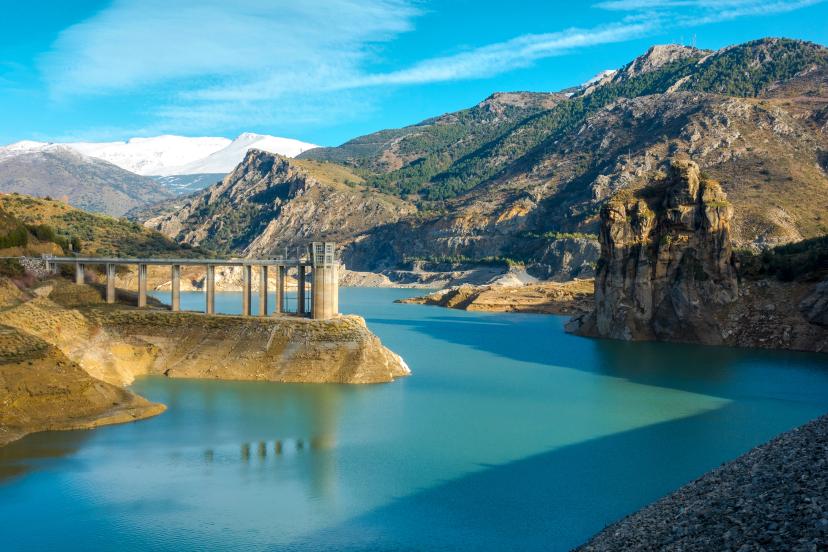
Canales Reservoir – Güéjar Sierra
Situated at the foothills of the Sierra Nevada, Canales Reservoir is a serene spot for relaxation and outdoor activities. The reservoir, completed in 1988, is surrounded by lush greenery and offers opportunities for fishing and peaceful walks. Its proximity to Granada makes it an ideal escape into nature.

Alhambra
The Alhambra, a UNESCO World Heritage Site, is Granada’s crown jewel and a masterpiece of Moorish architecture. Originally a fortress and later a royal palace, the Alhambra features intricately carved stucco walls, serene courtyards, and beautifully landscaped gardens, with breathtaking views of the city and the Sierra Nevada mountains beyond.
Practical Tips
Cycling in Sierra Nevada is a rewarding experience, but the high-altitude terrain and sharp temperature changes mean good preparation makes all the difference.
Below are essential tips to help you enjoy each ride safely and comfortably:
1. Prepare for Temperature Changes
Sierra Nevada’s climbs rise quickly in altitude, and temperatures can drop 10–15°C between Granada and the upper mountain slopes.
Bring: arm warmers, windproof layers, full-finger gloves in shoulder seasons.
2. Start Early in Summer
Lower elevations around Granada heat up fast in summer.
Beginning your ride early ensures cooler conditions and more comfortable climbing.
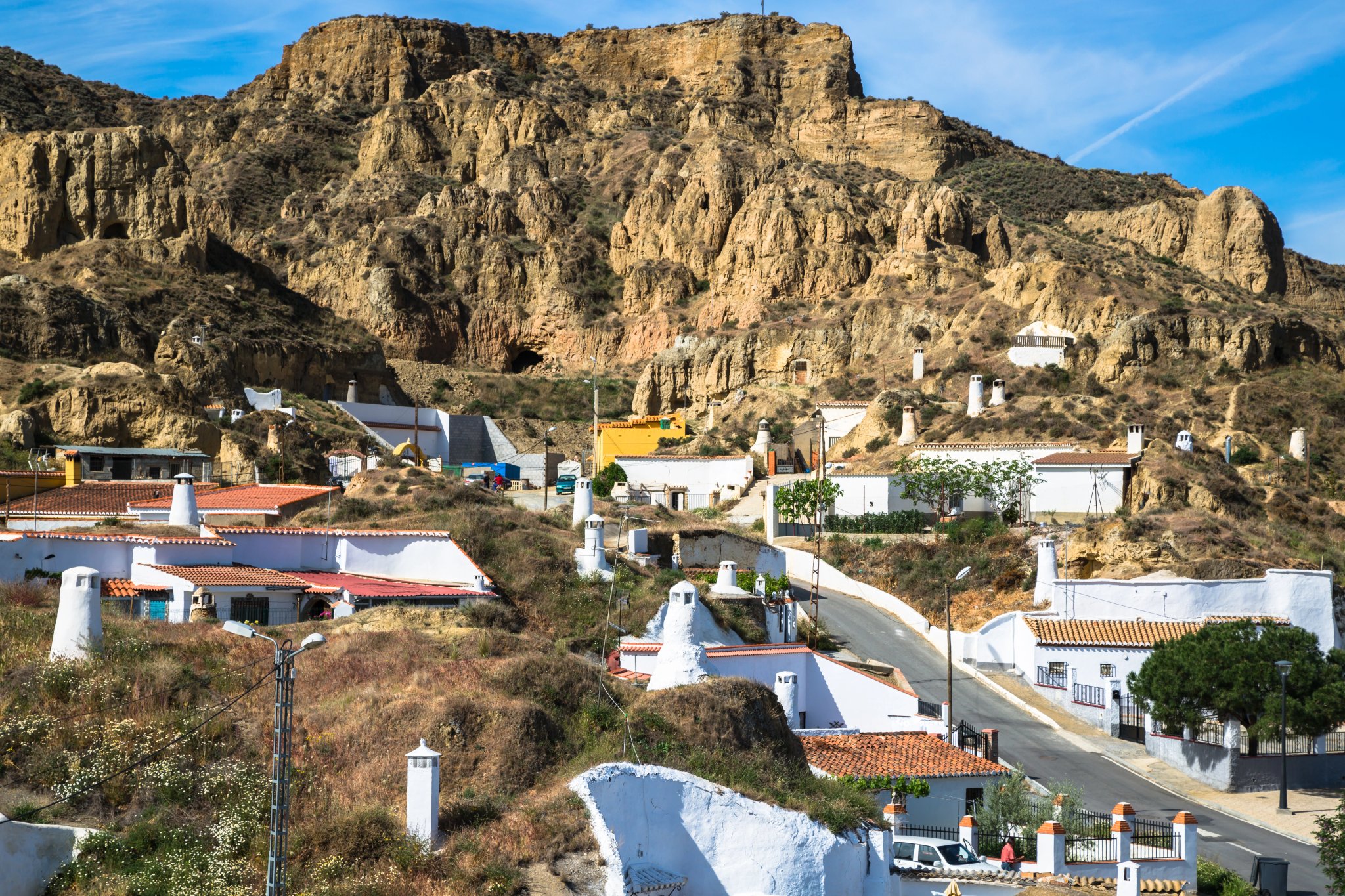
3. Hydration Is Key
The dry Andalusian air can dehydrate you quickly.
Carry two bottles, refill whenever possible, and consider electrolytes for longer days.
4. Check Weather at Altitude
Conditions at 2,000–2,500 m can be completely different from the city.
Always check forecasts for Hoya de la Mora or the upper ski station, not just Granada.
5. Expect Wind Higher Up
Wind can be strong above 2,000 m, especially near Hoya de la Mora and the Veleta access road.
Be prepared for gusty conditions and exposed sections.

6. Know Your Limits on Veleta
The road becomes remote and extreme above 2,400 m.
If the weather turns, descending early is safer.
Your tour already includes guidance on when it’s safe to continue higher.
7. Bring the Right Gearing
Compact gearing (e.g., 34T) is recommended for long sustained climbs, especially if you’re not used to high-altitude efforts.
8. Eat Early, Eat Often
Long mountain days require consistent fueling.
Small snacks every 30–40 minutes help maintain energy on the big climbs.

9. Watch for Gravel Near the Top
The final kilometres toward Veleta may have loose gravel depending on the season.
Ride cautiously and prioritize safety.
10. Use Sunscreen Year-Round
Sun exposure is intense at altitude, even in spring and autumn.
Sunscreen and sunglasses are essential.
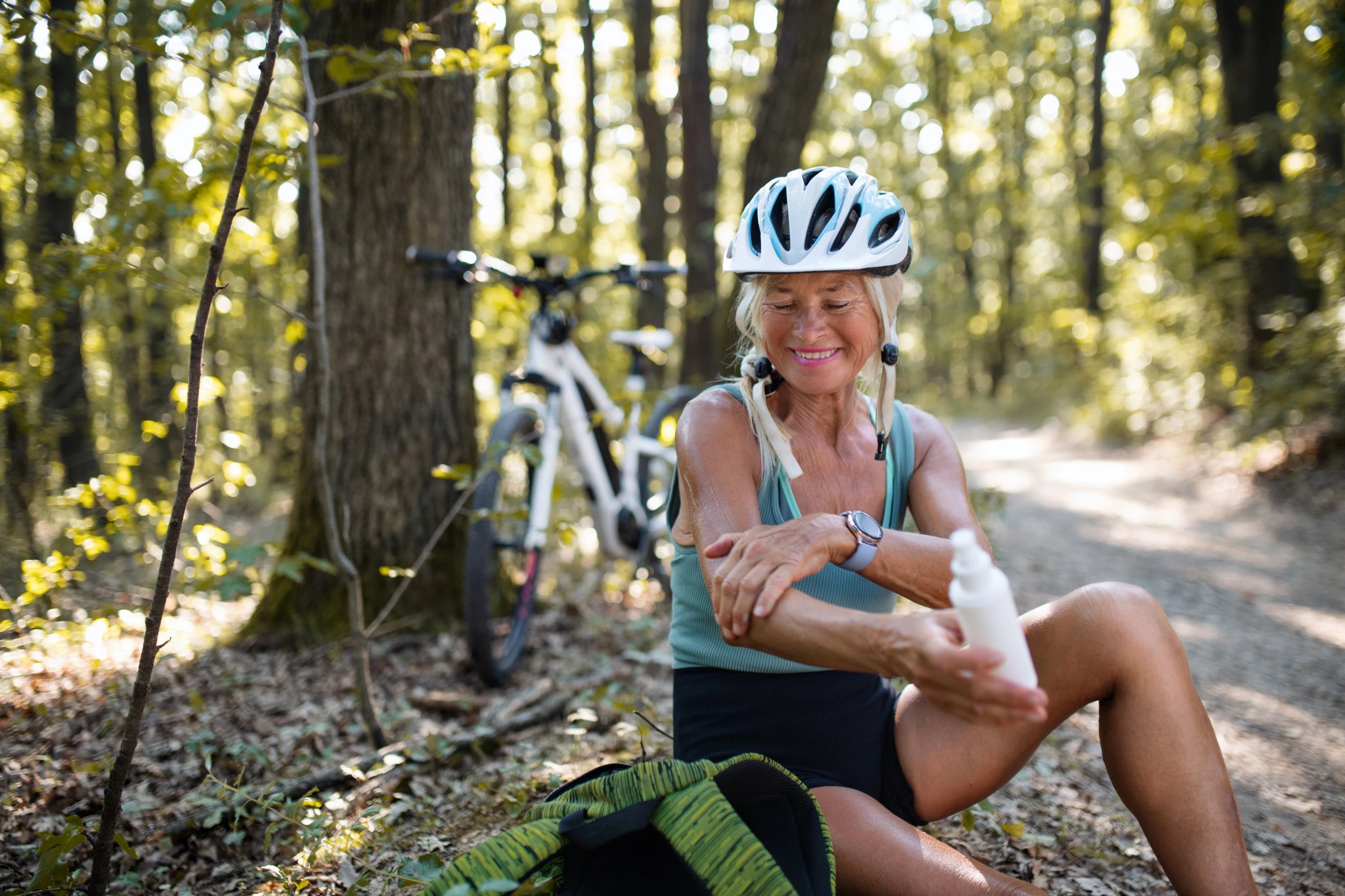
Where to Stay
Sierra Nevada offers several excellent bases for cyclists, each with its own advantages depending on the type of riding you’re planning. Below are the most cyclist-friendly areas.
The best all-round base. You’ll enjoy lively streets, great food, and quick access to all major climbs.
Good for: culture, restaurants, easy roll-outs
Benefits: cafés, bike shops, historic setting, perfect for non-riders
A peaceful mountain village overlooking the Canales Reservoir. Ideal for riders who prefer nature and quiet roads.
Good for: direct access to foothill climbs
Benefits: pine forests, scenic accommodation, cooler temperatures
The high-altitude ski village near the upper mountain slopes.
Good for: summer training and altitude nights
Benefits: instant access to upper sections of the Veleta climb
What to Look For in Cycling-Friendly Accommodation
Secure bike storage — locked rooms, garages, or monitored spaces
Bike washing and basic tools — pumps, stands, and repair kits
Early breakfast — ideal for summer rides with early starts
Quiet rooms — helpful for recovery after long climbing days
Close access to the main routes — so you can roll out easily
Walkable surroundings — great for evenings in Granada
Our Sierra Nevada Cycling Tour is based entirely in Granada, the ideal starting point for riding both the Andalusian foothills and the high mountain roads of Sierra Nevada.
Getting There
Granada is easy to reach from within Spain and across Europe, making it a convenient base for your Sierra Nevada cycling adventure. Below are the best ways to arrive.
By Air
Granada–Jaén Airport (GRX)
The closest airport to the city, located just 20 km away.
Good for: direct arrivals from major Spanish cities and select European connections.
Travel time to Granada: 20–30 minutes by taxi or airport bus.
Málaga–Costa del Sol Airport (AGP)
The largest international gateway to the region, with excellent global connections.
Good for: international travellers and long-haul flights.
Travel time to Granada: ~1.5 hours by car or direct bus.
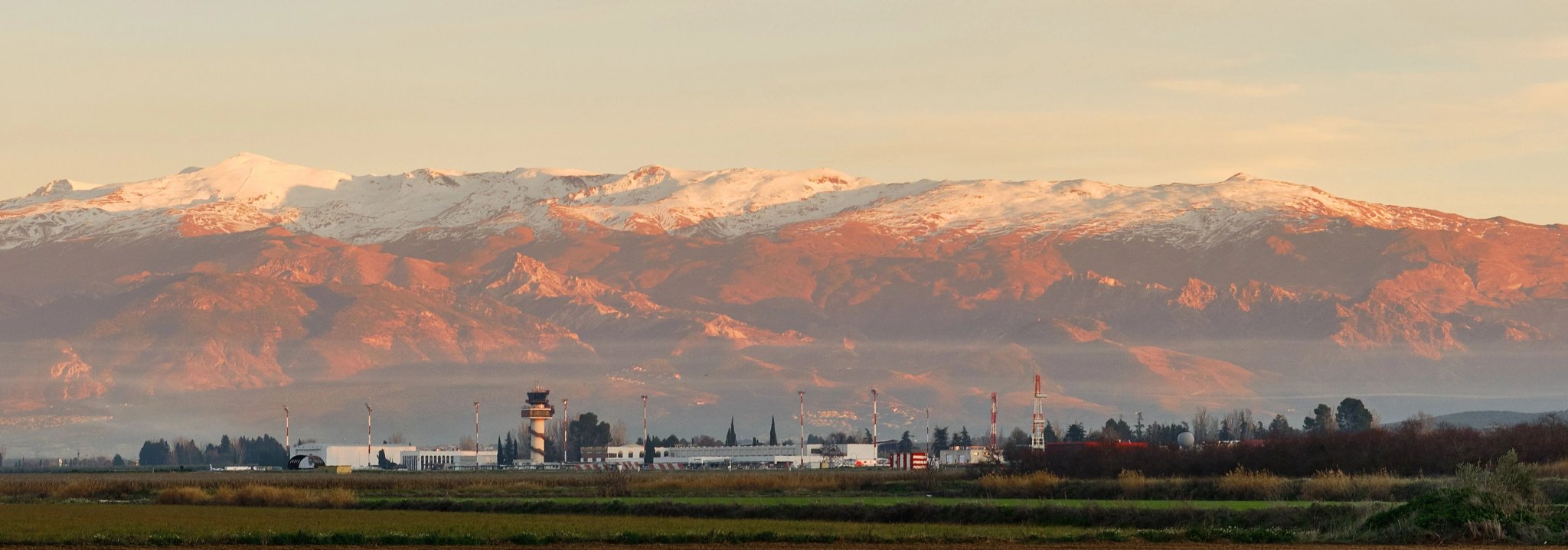
Ride with Full Support
Enjoy Sierra Nevada’s iconic climbs with the confidence of knowing every detail is taken care of. Our cycling tour combines independence on the bike with complete behind-the-scenes support — so you can focus entirely on the ride:
What’s Included
GPX navigation & route files
Accurate, easy-to-follow GPS tracks for every stage of your journey.
Handpicked accommodations
Stay in cyclist-friendly hotels in strategic locations close to the climbs.
Daily luggage transfers
Your bags move to the next hotel while you enjoy the ride — hassle-free.
Airport pickups & local transfers
Whether arriving by plane or train, we’ll get you to your starting point smoothly.
Emergency support on the road
If your bike breaks down or weather disrupts your day, we’re here to help.
Fully customisable itinerary
We tailor distances, difficulty levels, routes, and can add extra nights on request.
Ready to Ride? Vamos!

Hassle-Free
We handle itineraries, accommodations, and anything else you prefer not to deal with, so you can enjoy a carefree holiday.

Completely Customizable
Flexibility is our middle name — whether you want more or less, or just beyond ordinary, we’ll make it happen.

Book with confidence
We are a financially protected company, fully bonded and insured, keeping your money safe and allowing you to travel with confidence.

Unbeatable support
Our 24/7 customer support is where we show our passion, bringing you a better experience by making your well-being our number one priority.

.jpg&w=3840&q=75)
